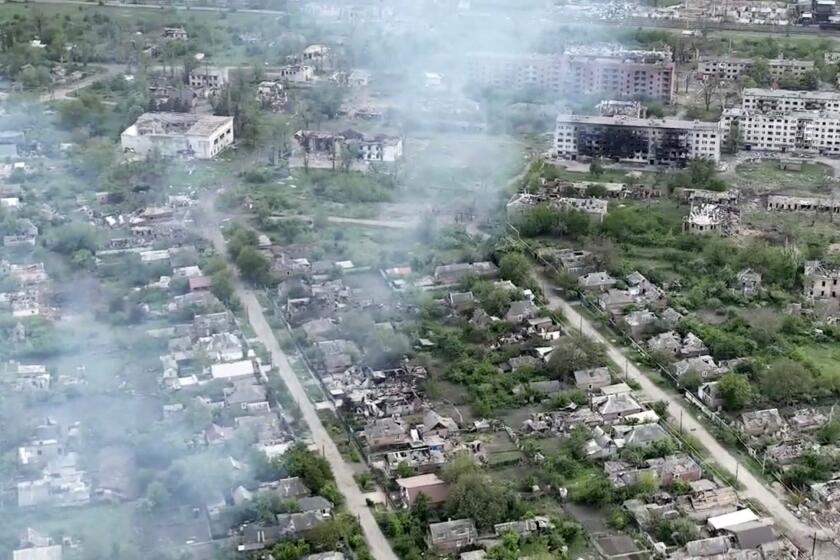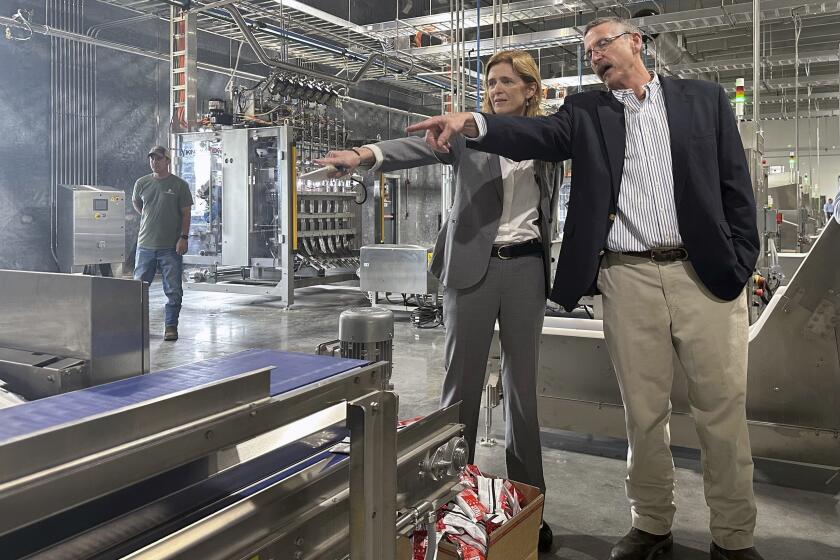Sewage, Rain Wash Vacations Down the Drain
The glum expression on Colleen Groat’s face said it all. The 48-year-old Canadian had spent six months planning her first vacation in Hawaii, and not once during two weeks here did she set foot in the water.
Her trips to the beach were met with signs that read: “WARNING. No swimming. No fishing. Sewage contaminated water.”
The famously blue waters of Oahu remained brown through most of Tuesday, tainted by 48 million gallons of untreated wastewater spilled during one of the rainiest stretches in Hawaii’s recent history.
Many of the most popular beaches on the island, including Waikiki, were closed to water activities until late Tuesday afternoon. At that time, officials announced some of the beaches would reopen, but tourists remained wary.
The seemingly constant downpour caused floods and mudslides, damaged homes and businesses and burst one earthen dam on the island of Kauai, killing seven residents March 14.
Early damage estimates range from $40 million to $50 million statewide, though repair and recovery costs probably will end up much higher. Officials say it’s too early to tell how tourism -- the state’s biggest industry -- has been affected.
The sun shone all day Monday, but clouds and showers returned early Tuesday, casting doubt on official proclamations that the storms had passed. Meteorologists remained noncommittal: The worst part is probably over, they say, but who knows?
“It would have been nice to go in the water,” said Groat, from Kelowna, British Columbia. It was her last day in Honolulu, and she and her aunt lay on beach chairs on Waikiki, trying to catch a little sun before going home.
“You hear so much [about Hawaii], and you come here thinking you’ll be spending all this time on the beach,” Groat said, her voice trailing off. “I have to go back to work tomorrow.”
What’s it like coming to Hawaii and not swimming at the beach? Frustrated visitors offered a few analogies: It’s like going to Disneyland and not riding a single ride; like visiting the Grand Canyon and not peering down the hole; like touring Kansas City, Mo., without trying the barbecue.
Dana and Chad White traveled here from Kansas City, to spend their first stretch of time alone without their 5-month-old daughter, who was staying with grandparents. “It poured every day,” said Chad, 34. The couple opened the balcony doors in their hotel room each night -- at least for a little while.
Said Dana, 26, “The smells haven’t been the best.”
They arrived on the same day last month that a 42-inch main ruptured and spilled untreated sewage into the Ala Wai Canal, which leads to the ocean just off Waikiki. The most contaminated beaches lay between Magic Island to the west and the Moana Surfrider Hotel to the east -- a stretch of about two miles.
A large number of Oahu’s 4.7 million visitors last year spent their time on this densely developed coastline. For the last week, the warning signs have been posted about every 50 yards. City workers have patrolled the beaches, warning those who missed or ignored the signs.
The beaches have been eerily empty. On one stretch near the Hilton Hawaiian Village, where this time of year there normally would be several hundred sunbathers, only a few dozen people lay on beach towels. Others stood at the water’s edge. An occasional maverick, usually a child, jumped into the water.
The heavy rains began in mid-February and continued through March, breaking precipitation records in several island locations.
On Mt. Waialeale in Kauai, meteorologists recorded 92 inches of rain -- more than 7 1/2 feet -- in March. The previous one-month record of 90 inches was set in April 1971. The spot is considered one of the wettest on Earth, averaging 460 inches of rain a year. Seattle averages 36 inches, Los Angeles, 14 inches.
Sen. Daniel K. Inouye (D-Hawaii) is seeking $15 million to $30 million in emergency federal aid to help Kauai recover from the flooding and damage caused by the breaching of the century-old Kaloko dam.
Hawaii Gov. Linda Lingle has asked for $14.3 million in emergency funds from the Legislature to begin recovery and rebuilding.
“It’s been like living in the middle of a hurricane that keeps going and going,” said Larry Leopardi, chief of road maintenance for Honolulu.
Like many others here, Leopardi said he’d never experienced anything like this. His crews have worked round-the-clock in what, until this week, was a futile effort to keep roads and waterways functional.
Honolulu Mayor Mufi Hannemann said the storms have done one good thing: bolstered his campaign to update the island’s infrastructure.
Even before the sewer main burst, the city had designated 55% of its $629-million capital improvements budget this year for updating the sewer system. Hannemann said those improvements should have been made years ago, along with updates to the island’s canals, streets, embankments and water runoff system.
“The previous mayors didn’t deal with them,” Hannemann said. “Now we’re playing catch-up.”
As the rains came down, hoteliers saw a drop in occupancy, from 84% in March 2005 to 81% last month, according to Joseph Toy, a Honolulu hospitality consultant. Toy conceded that “we have seen some cancellations in the past two weeks and moving into April,” but he is optimistic that 2006 will be a good year.
As many as 50 stores at Kahala Mall in Honolulu and at least 20 retailers elsewhere were damaged by floodwater. Officials don’t have an exact tally but expect the number of damaged homes to be in the dozens. Many residents evacuated to shelters.
Even retailers whose property was not damaged during the six-week downpour were affected.
At Whalers General Store, just off Waikiki Beach, manager Dora Tseng said Monday that sales of suntan lotion, beach mats and swimming goggles were nonexistent. On the other hand, sales in liquor, chips and ice cream had gone up.
“We’re selling a lot of beer,” Tseng said. “The people need something to do in their rooms besides be depressed.”
*
Times staff writer Lynn Marshall in Seattle contributed to this report.
More to Read
Start your day right
Sign up for Essential California for news, features and recommendations from the L.A. Times and beyond in your inbox six days a week.
You may occasionally receive promotional content from the Los Angeles Times.





